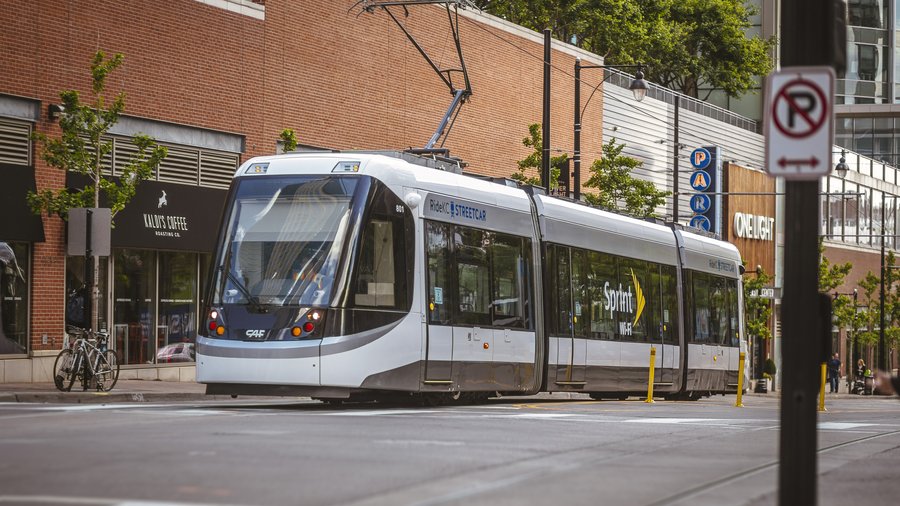One streetcar is out of service after an "eventful week," but that hasn't deterred riders from hopping on, said Donna Mandelbaum, communications manager for Kansas City Streetcar Authority Inc.
During the eight days from May 23 to Memorial Day, the streetcar carried more than 46,500 riders, with Memorial Day weekend bringing in more than 25,000 of them.
The system's "eventful week" included the streetcar's first mishap on May 23, when streetcar 804 derailed near its Union Station stop when a track switch failed. Thankfully, none of the 10 riders aboard were injured, but it caused the Streetcar Authority to suspend service for more than five hours. Buses substituted for the vehicles while the problem was fixed, but streetcars still carried 1,913 riders that day.
On May 25, service was again suspended due to an electrical issue that created a hot pole near a construction site at 20th and Main streets. Ridership that day hit 3,303.
The following day, a driver failed to stop for a red light and crashed into a streetcar. Again, no injuries occurred, but the streetcar was damaged and is out of service. Mandelbaum said it's being repaired as quickly as possible. The cost of the damage is being evaluated, and now the system is running with three streetcars and no backup. Normally, the route runs three streetcars with one in reserve. On the day of the incident, the streetcar carried 3,011 riders.
The Streetcar Authority creates event reports to document incidents and to help determine possible causes. The authority continually works to promote the streetcar and safety tips along with working through kinks in the system, Mandelbaum said, but, unfortunately, mishaps happen as the city and drivers adapt to the streetcars on the road. Riders haven't been too fazed, however, as ridership numbers still are climbing.
"It's all a learning curve for everyone," Mandelbaum said. "But people have accepted us and want to use us."
During the 27 days of operation since the streetcar made its debut on May 6, total ridership has reached 173,751 as of Wednesday. Friday will be the four-week anniversary of the streetcar.
The streetcar uses an automatic passenger counter — a sensor in the doorways — to count riders. Ridership numbers count the number of rides, not specific passengers. Mandelbaum said once the information is collected, it is manually scrubbed to ensure accuracy.
So far, weekends are the most popular times to ride, averaging 9,554 a day. Weekdays aren't too far behind, averaging 6,435 riders daily.
On top of the accidents, last week's heavy rain also threw a curve ball. It was the first time the streetcar had to use its severe weather policy, which is modeled after the MAX bus system. Because the streetcar is an electric vehicle, thunderstorms with lightning require the pantograph to be disconnected from the wire above.
When severe weather hits, the streetcars have designated areas to park that are out of the way of traffic, including Union Station and near the library. Mandelbaum said passengers are taken to safety in nearby businesses. The authority is looking for more "safe" areas and businesses to partner with when severe weather strikes, including tornado warnings and watches.
Between 2008 and 2014, urban transit agencies reported 6,943 rail safety and security events to the National Transit Database, with 3.5 percent coming from streetcars.
See the accompanying infographic for more insight into daily ridership numbers and trends.
